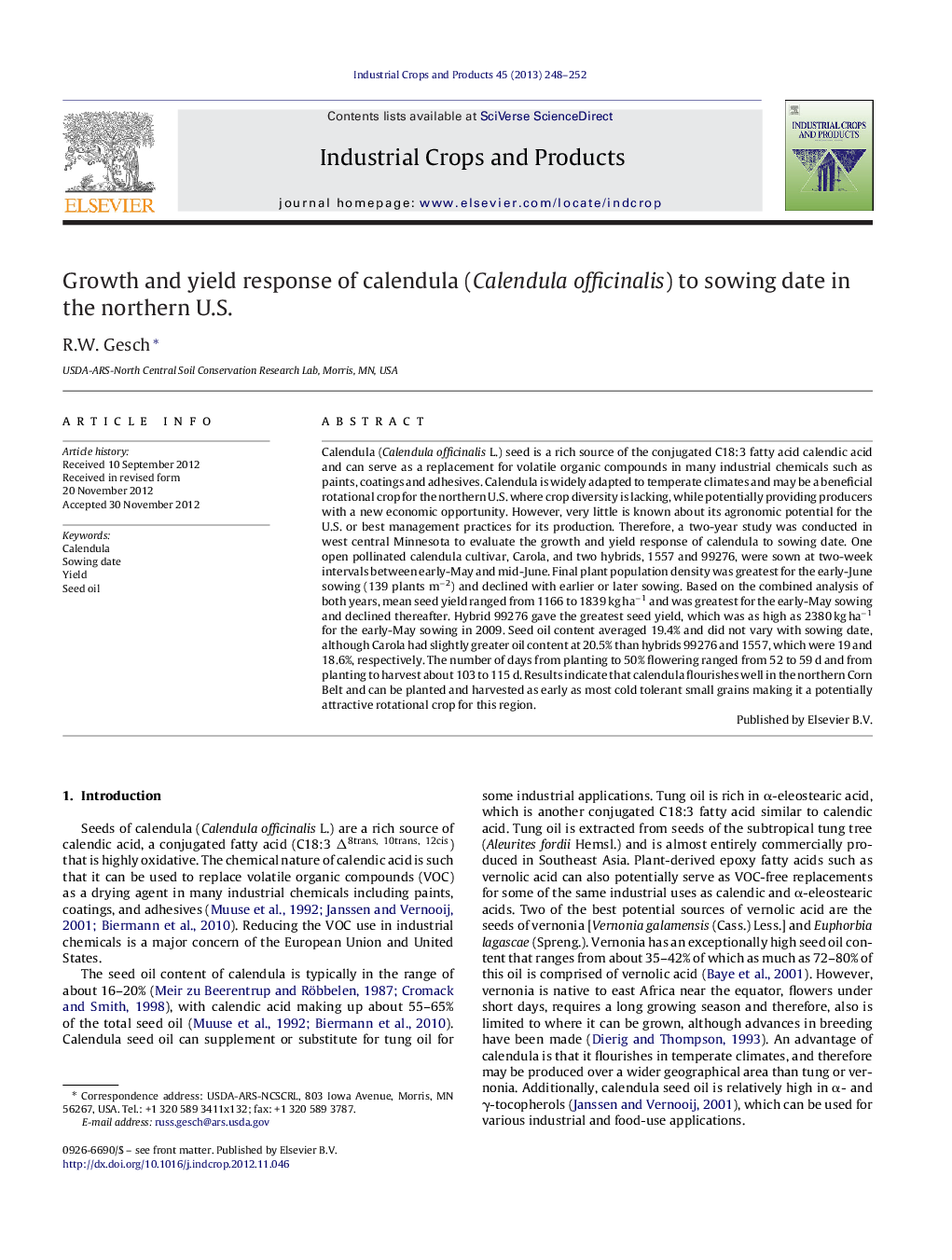| کد مقاله | کد نشریه | سال انتشار | مقاله انگلیسی | نسخه تمام متن |
|---|---|---|---|---|
| 4514044 | 1624864 | 2013 | 5 صفحه PDF | دانلود رایگان |

Calendula (Calendula officinalis L.) seed is a rich source of the conjugated C18:3 fatty acid calendic acid and can serve as a replacement for volatile organic compounds in many industrial chemicals such as paints, coatings and adhesives. Calendula is widely adapted to temperate climates and may be a beneficial rotational crop for the northern U.S. where crop diversity is lacking, while potentially providing producers with a new economic opportunity. However, very little is known about its agronomic potential for the U.S. or best management practices for its production. Therefore, a two-year study was conducted in west central Minnesota to evaluate the growth and yield response of calendula to sowing date. One open pollinated calendula cultivar, Carola, and two hybrids, 1557 and 99276, were sown at two-week intervals between early-May and mid-June. Final plant population density was greatest for the early-June sowing (139 plants m−2) and declined with earlier or later sowing. Based on the combined analysis of both years, mean seed yield ranged from 1166 to 1839 kg ha−1 and was greatest for the early-May sowing and declined thereafter. Hybrid 99276 gave the greatest seed yield, which was as high as 2380 kg ha−1 for the early-May sowing in 2009. Seed oil content averaged 19.4% and did not vary with sowing date, although Carola had slightly greater oil content at 20.5% than hybrids 99276 and 1557, which were 19 and 18.6%, respectively. The number of days from planting to 50% flowering ranged from 52 to 59 d and from planting to harvest about 103 to 115 d. Results indicate that calendula flourishes well in the northern Corn Belt and can be planted and harvested as early as most cold tolerant small grains making it a potentially attractive rotational crop for this region.
► Growth and yield response of three calendula cultivars sown from early-May to mid-June were evaluated over two seasons.
► Calendula seed yields averaged 1166–1839 kg ha−1 and were as high as 2380 kg ha−1 for one cultivar.
► Seed oil content differed by cultivar but not sowing date and was as high as 20.5%.
► Calendula could serve as an excellent rotational crop for the northern USA.
Journal: Industrial Crops and Products - Volume 45, February 2013, Pages 248–252